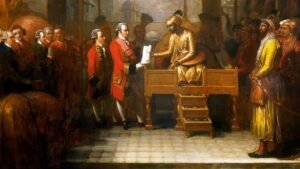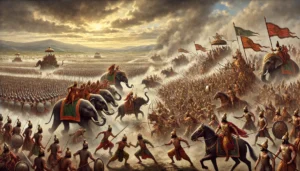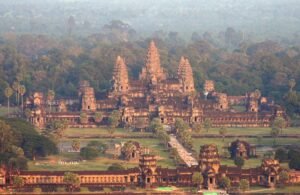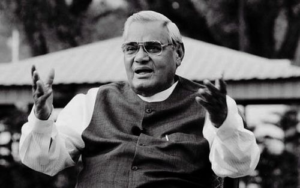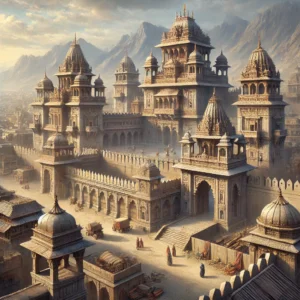
The Bharata dynasty is one of the most significant royal lineages in Indian history, forming the foundation of the Kuru dynasty and playing a pivotal role in the Mahabharata. This article traces the lineage of Bharata from Yayati and clarifies the historical continuity leading to the Kurus.
1. Yayati and the Origin of the Chandravansha (Lunar Dynasty)
The Chandravansha, or Lunar Dynasty, originates from Soma (Chandra), the Moon God. In this lineage, Nahusha became a great ruler, and his son Yayati inherited the throne.
Yayati’s Five Sons and the Division of His Kingdom
Yayati had five sons from two wives:
- Devayani (Daughter of Shukracharya, the Asura Guru):
- Yadu (Ancestor of the Yadavas, including Krishna)
- Turvasu
- Sharmishtha (Daughter of Asura King Vrishaparva):
- Druhyu
- Anu
- Puru (Youngest but chosen as the heir due to his virtue)
Since Yadu refused to take on his father’s old age in exchange for the throne, Yayati cursed him that his descendants would never inherit his kingdom. Instead, the rule was given to Puru, making him the true heir of Yayati’s legacy.
2. The Puru Dynasty Leading to Bharata
The Puru dynasty continued for many generations, leading to the birth of Dushyanta and his famous son, Bharata. Below is the lineage from Puru to Bharata:
- Puru
- Janamejaya I
- Pracinvan
- Pravira
- Manasyu
- Bhadrashrenya
- Durmada
- Ilina
- Dushyanta → Married Shakuntala (daughter of Sage Vishwamitra and Apsara Menaka)
- Bharata
Bharata: The Founder of Bharatavarsha
Bharata became an extraordinary ruler, and the land he ruled came to be known as Bharatavarsha (modern-day India derives its name from him). Unlike his predecessors, Bharata did not inherit the kingdom automatically but proved his worth through his own abilities. He was a great emperor and performed numerous Ashwamedha Yajnas.
3. The Bharata Dynasty and the Kuru Lineage
Bharata’s successors faced a unique situation—none of his sons were deemed worthy of ruling. As a result, he adopted Bharadvaja’s son Vitatha (also known as Bhumanyu) to continue the lineage.
The Lineage from Bharata to Samvarana
- Bharata
- Bhumanyu (Vitatha)
- Suhotra
- Hasti (Founded Hastinapura)
- Vikrama
- Vichitravirya I
- Suhotra II
- Brihadratha
- Pushkarin
- Jahnu (Famous for consuming and releasing the Ganges, giving rise to the term “Jahnavi”)
- Suratha
- Viduratha
- Sarvabhauma
- Jayatsena
- Ravata
- Bhavuka
- Chakroddhata
- Sushena
- Sumitra
- Brihadratha II
- Vasu (Pratipa)
- Samvarana
4. How Samvarana’s Lineage Merged into the Kuru Dynasty
Samvarana was a key figure in the Bharata dynasty, but during his time, his kingdom was overthrown. He took refuge in the forest and later married Tapati, the daughter of Surya (the Sun God). Their son was Kuru, who revived the lineage and established the great Kuru Dynasty.
The Kuru Dynasty
- Kuru (Established Kurukshetra as a land of righteousness)
- Sudhanva
- Parikshit I
- Janamejaya II
- Shakuni
- Vichitravirya II
- Santanu → Married Ganga (Son: Bhishma) and Satyavati (Sons: Chitrangada & Vichitravirya III)
- Dhritarashtra, Pandu, and Vidura (Sons of Vichitravirya III’s widows via Vyasa)
- Kauravas (100 sons of Dhritarashtra) and the Pandavas (5 sons of Pandu)
- Parikshit II (Son of Abhimanyu, grandson of Arjuna, the last ruler of the Kuru dynasty)
5. Summary of Key Points
- Bharata was a descendant of Yayati through the Puru dynasty.
- Dushyanta, Bharata’s father, was not Yayati’s son but belonged to the same lineage.
- Samvarana’s dynasty continued through his son Kuru, leading to the Kuru dynasty.
- The Mahabharata’s central characters (Kauravas and Pandavas) emerged from this lineage.
The Bharata dynasty holds immense historical and cultural significance, connecting the early Puru lineage to the Kuru dynasty of the Mahabharata. Bharata, a great king, lent his name to the land, and his descendants shaped the epic narratives that form an essential part of Indian tradition.

